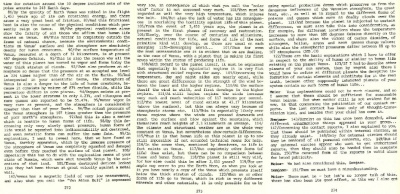Contact Report 029
From Billy Meier
Revision as of 11:36, 9 November 2017 by Daniel Leech (talk | contribs) (Created page with "Category:Contact Reports {{Unofficialunauthorised}} <br> __TOC__ <br> == Introduction == '''Please note this page requires formatting.''' Contact Report 29, Monday, 7th J...")
IMPORTANT NOTE
This is an unofficial and unauthorised translation of a FIGU publication.
This is an unofficial and unauthorised translation of a FIGU publication.
N.B. This translation contains errors due to the insurmountable language differences between German and English.
Before reading onward, please read this necessary prerequisite to understanding this document.
Before reading onward, please read this necessary prerequisite to understanding this document.
Introduction
Please note this page requires formatting.
Contact Report 29, Monday, 7th July 1975, 10:37 AM
Semjase Kontakt Berichte, 1st ed. Block 4, 1977
UET-WS Vol. 4, pg. 319, 1979-1980’s
Messages from the Pleiades, Vol. 1, pg. 271-274, 1979-1988
Semjase Kontakt Bericht, 2nd ed. Block 2, 1987
Plejadisch-plejarische Kontakberichte Block 1, pg. 221-225, 2002
Synopsis
Earth slowed the rotation of Venus.
This is not the entire contact. It is an unauthorised and unofficial translation and may contain errors.
Contact Report 29 Translation
| English | German |
| 29th Contact – | |
| Semjase: | Semjase: |
| 70. After the destruction of that far away system, the wanderer rushed out to the widths of the Universe, and took up its course towards Earth, where it was forced by the great planets and the sun into a new orbit which in consequence of that brought it on again and again into this system. | 70. Help translate by submitting the original German text. |
| 71. Known as “the destroyer”, it followed its new course and produced for itself in the course of — millions of years, a stable orbit. | |
| 72. This course led the destroyer uncontrollably close to stars and systems, or to other wandering stars and comets, which were by its gigantic size then forced out of orbit or were attracted by its gravity and were “kidnapped”. | |
| 73. This happened as well only a few thousand years ago, when this immense destroyer drew an object into its gravity and course, and led it over many millions of kilometers toward the Earth’s solar system. | |
| 74. The destroyer itself flew very far outside the reach of Earth gravity, but the object trailing in its gravity field passed dangerously close to Earth and evoked great catastrophes. | |
| 75. The whole solar system was plunged into disorder and chaos at that time and all its planets were pushed into new orbits. | |
| 76. The new object disturbing the harmony was forced by the gravity of the greater planets and the Sun into a course between Earth and Mercury, and was unable to leave the system. | |
| 77. And being the brightest and most reflective planet of Earth’s solar system, circles since then around the sun and is called by the Earth humans “Venus”. | |
| 78. These events, where Venus was captured by the Earth’s solar system , happened 3,453 years ago. | |
| 79. | |
| 80. By the events of the time Venus was guided into a very quiet course, for which it has one of the least eccentric orbits. | |
| 81. | |
| 82. This is the essential effect of that ancient close passage to Earth, by which the rotation of Venus was also influenced. | |
| 83. By the gravity of Earth, the rotation of Venus was slowed down and it started rotating in the opposite direction. | |
| 84. And in effect of the very short time of passage through Earth’s gravity, the rotation of the slowed planet was not able to increase itself, for which reason it attained an extremely long time for only one rotation, and maintains from that day the slowest rotation time in the whole solar system. | |
| 85. Since then one day on Venus lasts 117 Earth days, while the time for rotation around the 30 degree inclined axis of the poles amounts to 243 Earth days. | |
| 86. By the gravity of Earth Venus was robbed in its flight 3,453 years ago of its own rotational energy, and there arose a very great heat of friction. | |
| 87. And this frictional heat is also the cause of the physical conditions which presently reign on Venus. | |
Help us input the information and complete the page to the same standard as the others.
